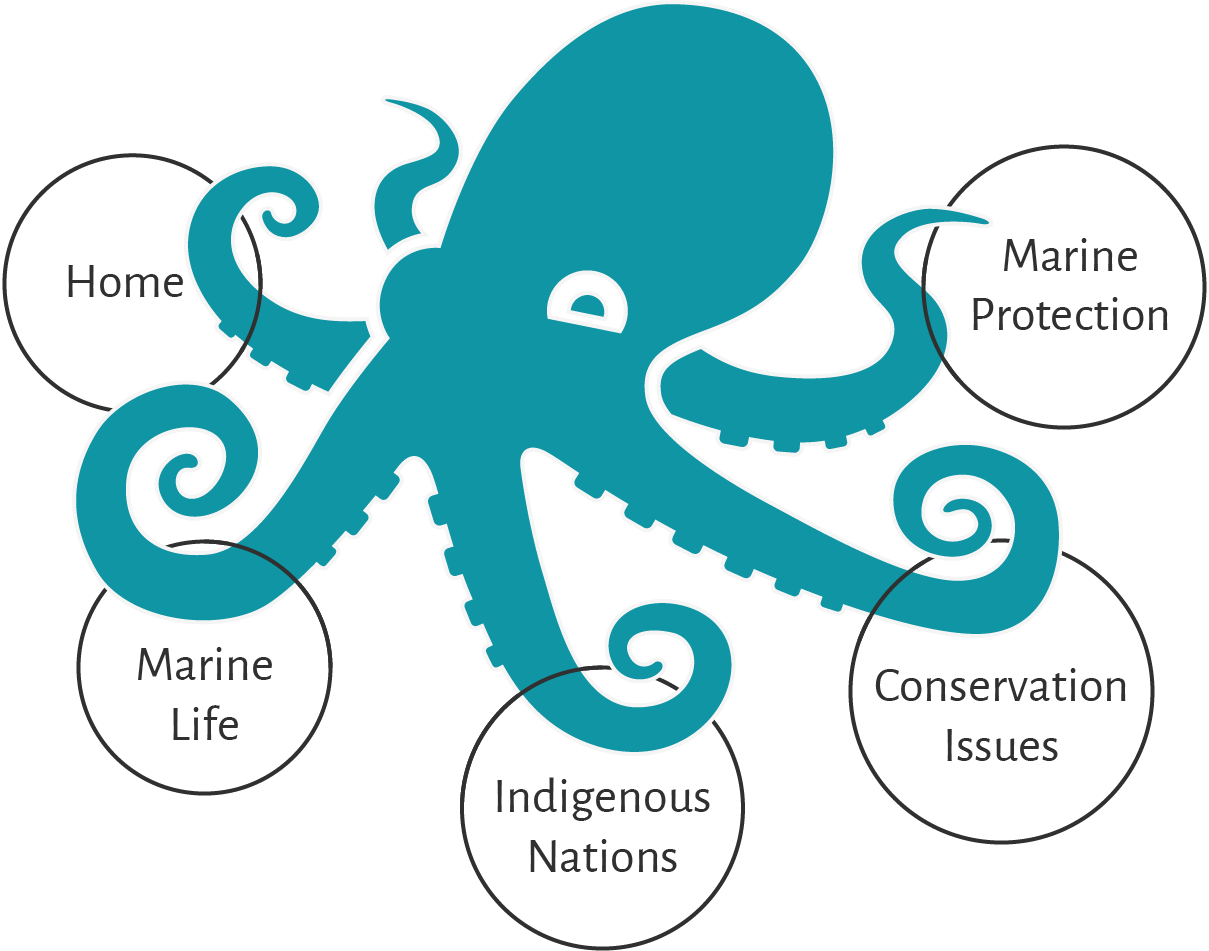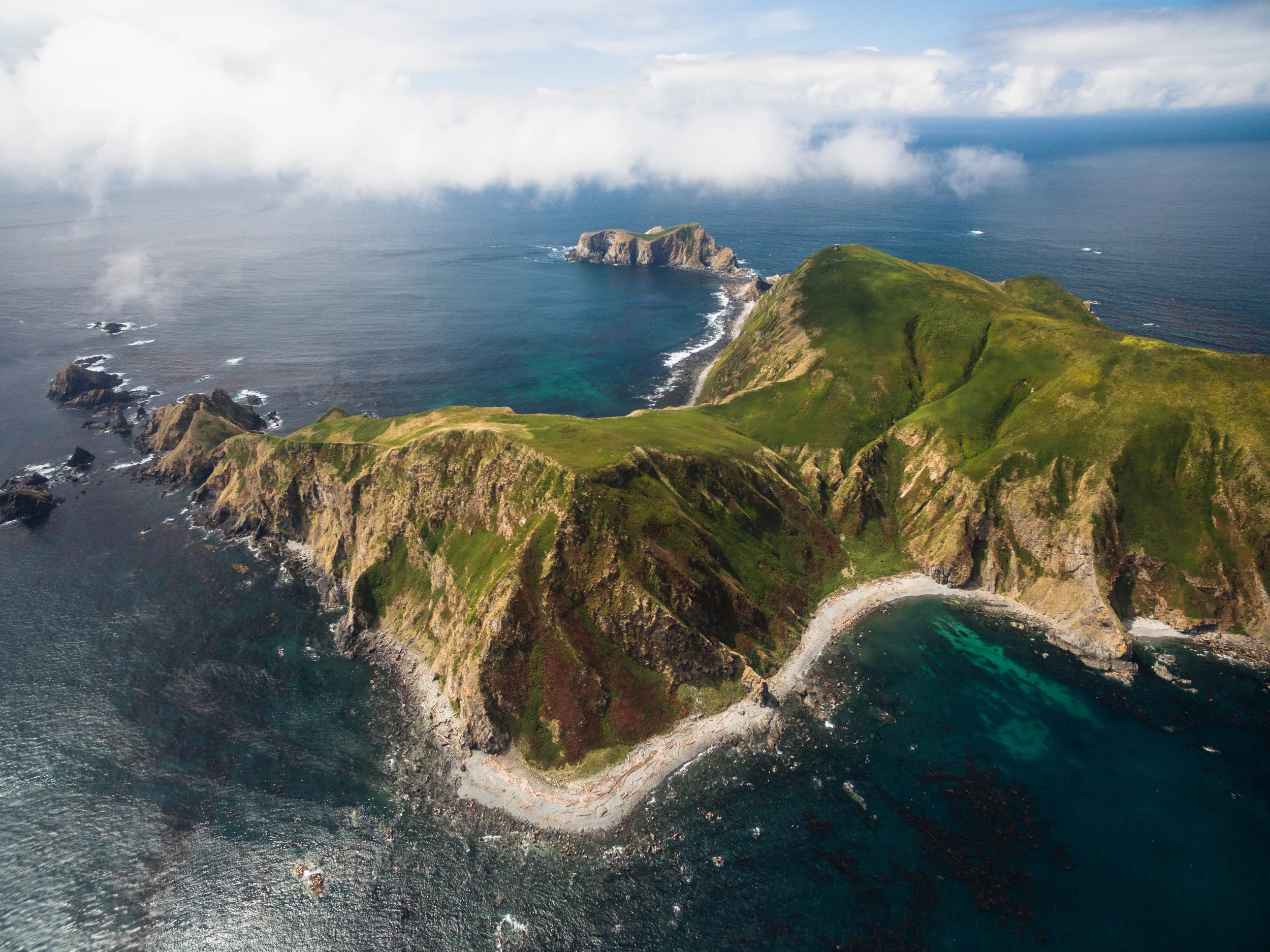Marine Mammals
The North and Central Coast and Haida Gwaii is a place of breathtaking beauty. Killer whales and humpback whales breach and play here, as do sea lions, dolphins, porpoises and sea otters. Industrial hunting and whaling all but destroyed entire populations of these animals. Although many are still considered threatened or endangered, these species are now protected and the North and Central Coast and Haida Gwaii has become their home again.
Humpback Songs
Humpback song is one of the most beautiful and haunting sounds on Earth. When hunting, humpback whales are often seen “bubble-net feeding”, strategically working together to cooperatively trap fish. The rhythmic feeding call used in these hunts can exceed 180 decibels, loud enough to burst a human eardrum.
Whale Haven
Killer whales don’t sing the way humpbacks do, but they do vocalize when they hunt or forage for food. As members of the dolphin family, killer whales are capable of echolocation, a sonar-like system that enables them to find food without actually seeing it. A single killer whale can consume up to an astonishing 180 kilograms (400 lbs) of fish in only 24 hours.
Fish
The North and Central Coast and Haida Gwaii teems with life, including all five Pacific salmon species, which eventually swim upstream in the exact same waterway they were born in. They then spawn and die, feeding animals and forests in the process. The towering trees that grow along salmon-spawning rivers are fertilized by the salmon carcasses brought to their roots by birds and mammals. Even songbirds benefit from returning salmon. The North and Central Coast and Haida Gwaii is home to small pelagic “forage fish”—including Pacific herring, anchovies, sardines, eulachon and smelt—all of which provide the foundation for a healthy ocean.
This is a genetically distinct coastal wolf with a chum salmon, one of their principle food staples. Many people mistakenly attribute the headless remains of salmon carcasses to bears. But bears lack the finesse and precision of wolves, and do not sever just the head. For a dedicated carnivore like a wolf, eating the most nutritious part of a fish makes the most sense.

The Lifecycle Of Herring
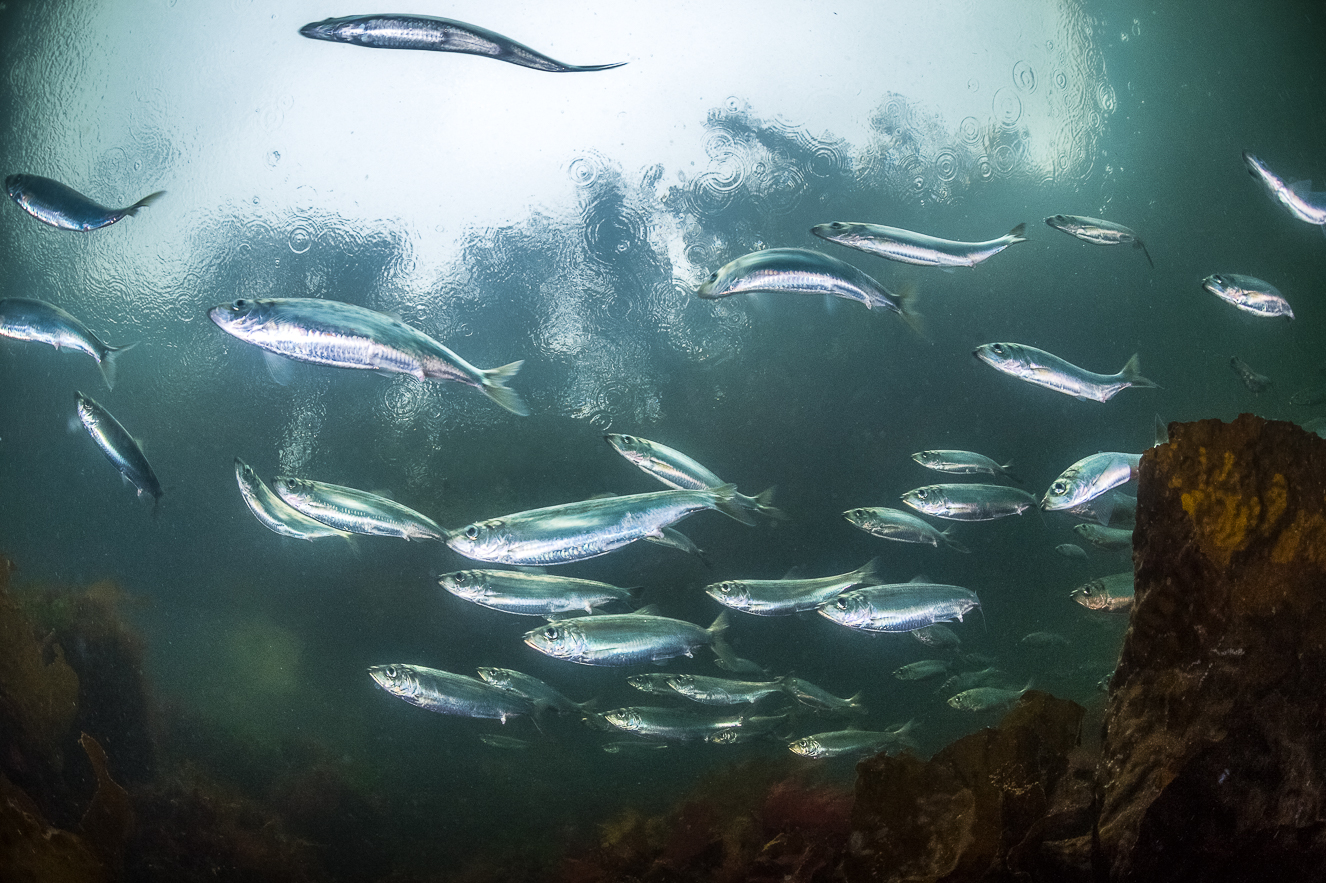 Herring are miraculous. Early in spring, just as the winter snow melts, they swim to the coast in vast schools, measured in thousands upon thousands of tons.
Herring are miraculous. Early in spring, just as the winter snow melts, they swim to the coast in vast schools, measured in thousands upon thousands of tons.
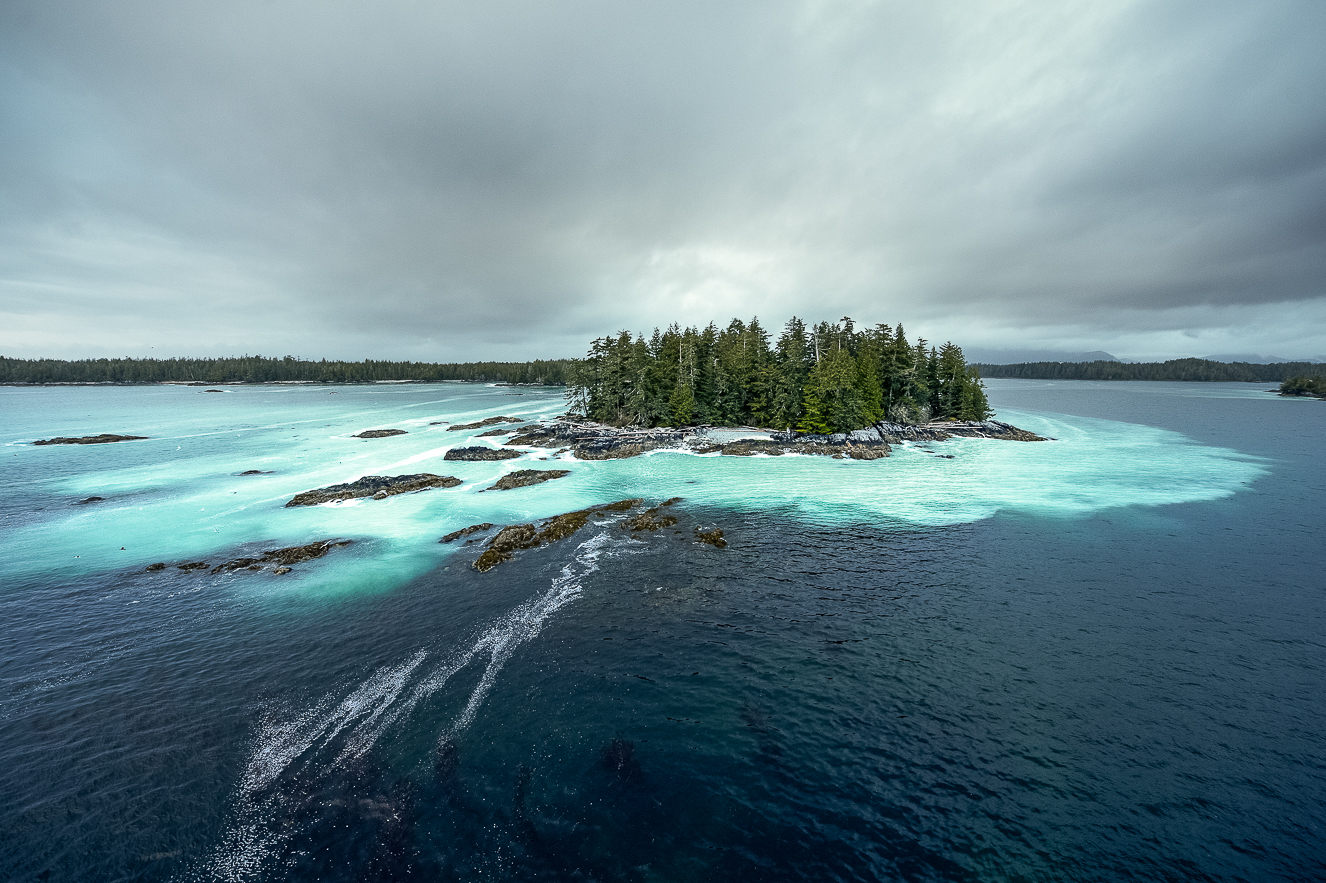 When conditions are right, females begin laying eggs - up to 20,000 per fish. When males discharge milt—or sperm—over the eggs, there’s so much of it the ocean turns white.
When conditions are right, females begin laying eggs - up to 20,000 per fish. When males discharge milt—or sperm—over the eggs, there’s so much of it the ocean turns white.
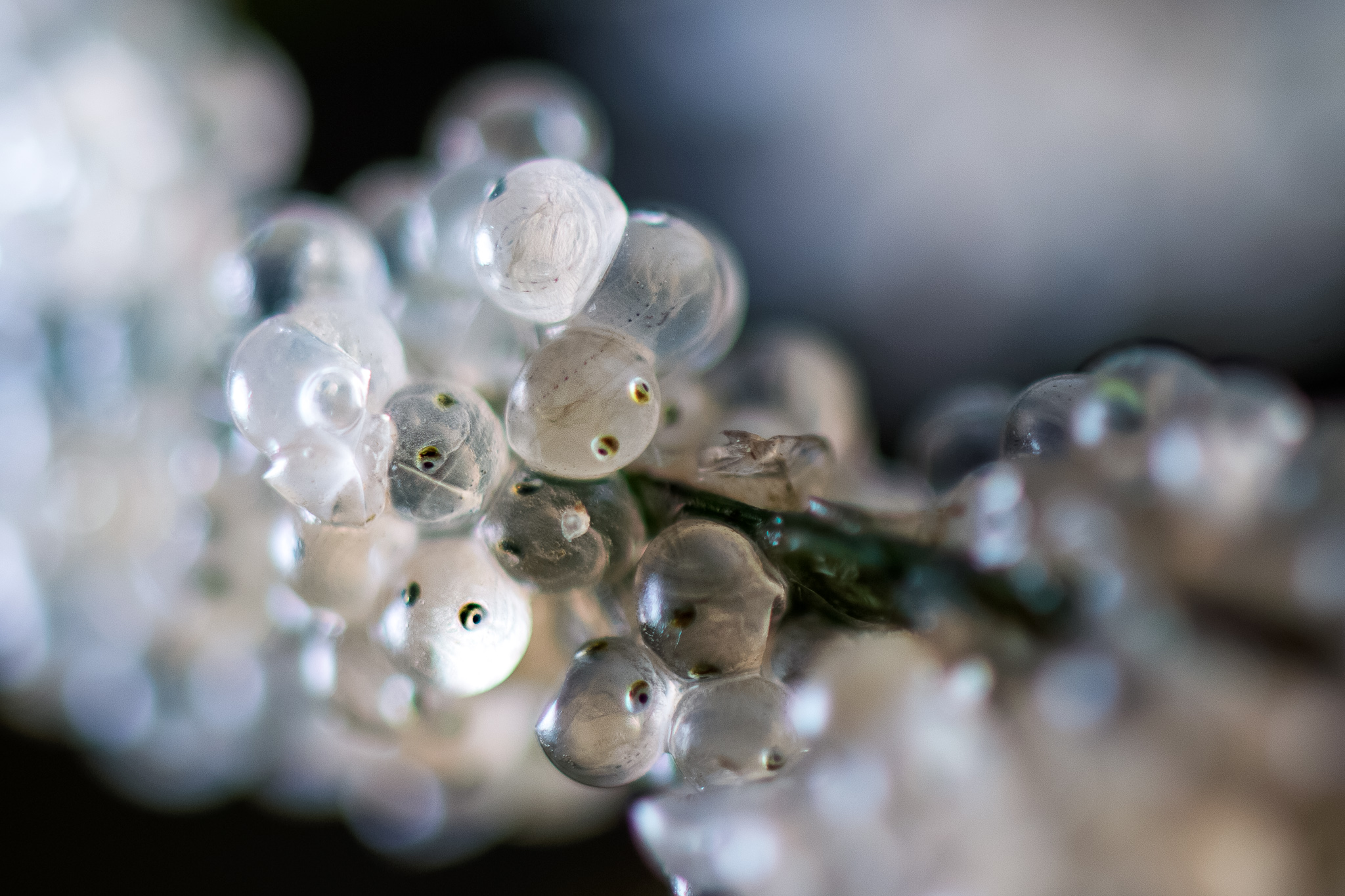 The fertilized pearl-like eggs stick to eelgrass, kelp and other underwater plants for two to three weeks while the herring embryos develop.
The fertilized pearl-like eggs stick to eelgrass, kelp and other underwater plants for two to three weeks while the herring embryos develop.
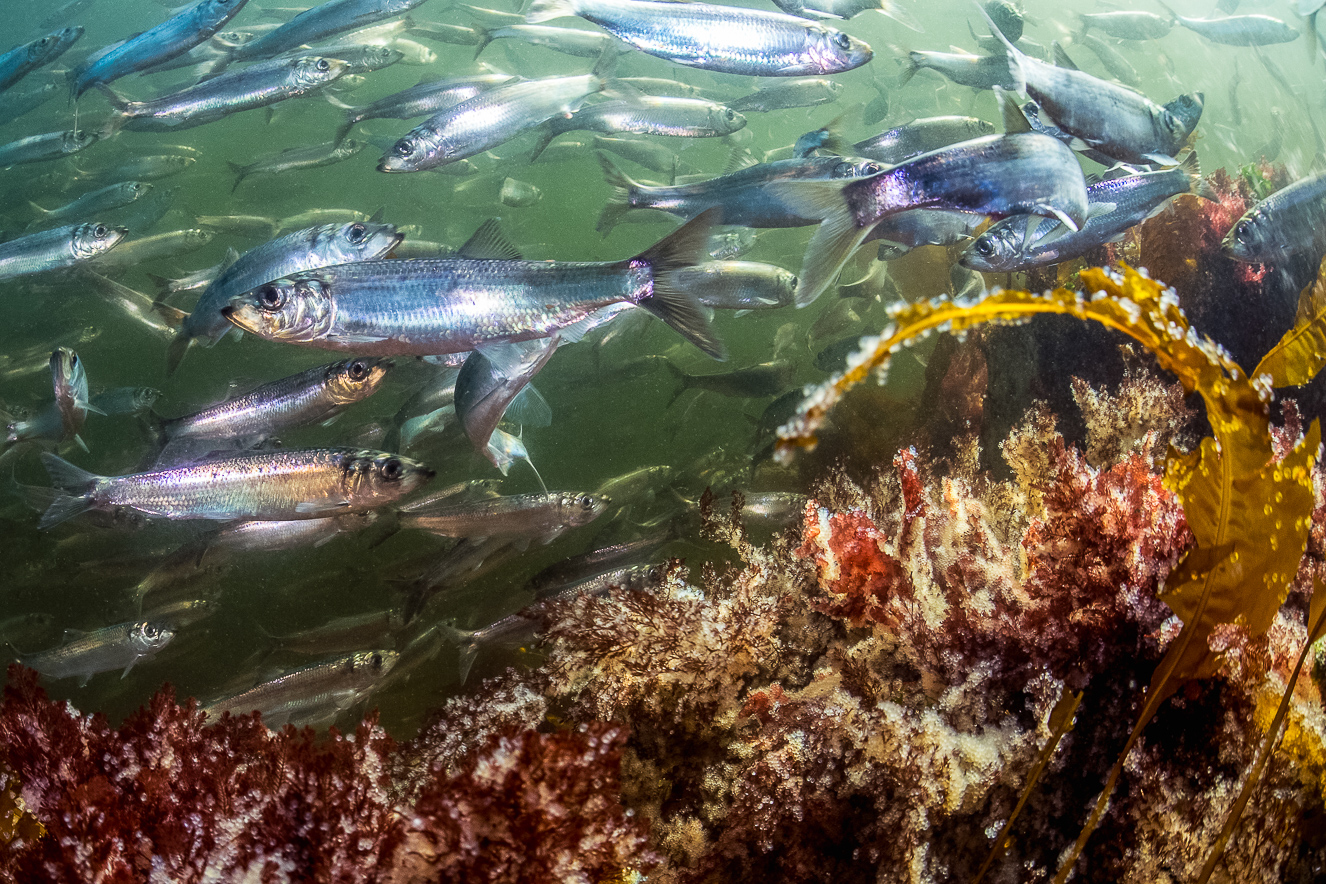 Millions of tiny herring begin the cycle all over again. There is, perhaps, no other one specie that play such a critical role in the health and survival of so many other species.
Millions of tiny herring begin the cycle all over again. There is, perhaps, no other one specie that play such a critical role in the health and survival of so many other species.
Birds
When fish school in large numbers, seabirds plunge beneath the surface to feast on them. Significant numbers of waterfowl call the North and Central Coast and Haida Gwaii home in herring season, including surf scoter, white-winged scoter, and long-tailed duck, as well as concentrations of waterbirds, especially Glaucous and Herring gulls, Mew, Ringed-bill and Thayer's gull. The Scott Islands Archipelago off the north-western tip of Vancouver Island is home to the largest seabird nesting colony in B.C., including over 60,000 tufted puffins,half the world’s Cassin’s auklet population, glaucous-winged gulls, cormorants, rhinoceros auklets, common murres or common guillemot, as well as hundreds of sea lions and seals.
Surf Scoters
These large black sea ducks, called surf scoters, are often found in abundance during the herring season—a flash of black feathers, orange feet, and bills. They flock by the thousands to feast where herring drop their eggs on eelgrass.
The Scott Islands
The Scott Islands support the highest concentration of breeding seabirds in the Canadian Pacific, and are the site of the most intensive seabird research in Canada. These Islands support over two million breeding seabirds belonging to twelve species.
Intertidal Life
Sometimes the sea is as quiet and playful as a rainforest fawn. Other times, it’s like an angry old grizzly. Life at sea changes regularly, and for creatures that live on its edge, those changes occur many times over a single day. The intertidal zone is a meeting place where a rich tapestry of life—from land and water—comes together.
Full of colour and exotic-looking life, intertidal zones in the North and Central Coast and Haida Gwaii support thousands of diverse species.
Each day, like clockwork, this mother grizzly and her cubs would emerge from the forest and spend hours digging for clams. In the Great Bear Rainforest, black bears, grizzlies and spirit bears alike comb the shores for clams, oysters, mussels and barnacles. Some bears break the shells off the rocks and suck out the fleshy creatures inside. Others eat everything, including the shell.
Barnacles, mussels, seaweed, clams, abalone, whelks and chitons are among the most abundant of all creatures in the North and Central Coast and Haida Gwaii, and on the planet.
Transparent and majestic hooded nudibranchs are able to swim with small paddle-like flippers. These predatory sea slugs are found throughout the North and Central Coast and Haida Gwaii.
Keep Exploring
